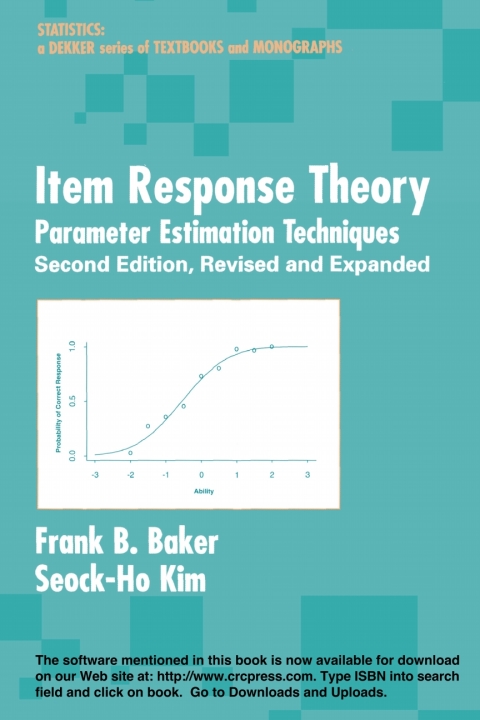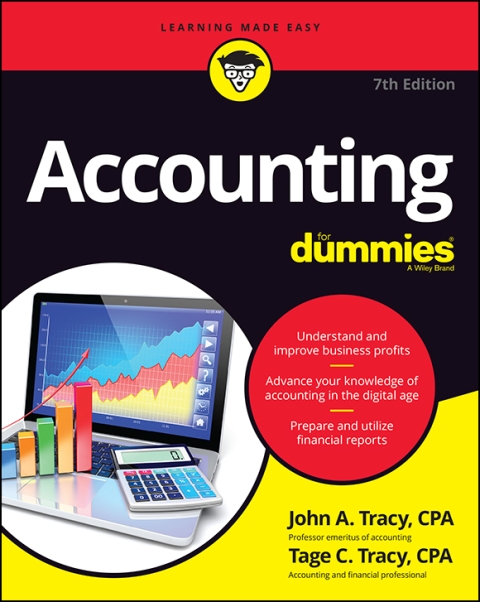Description
Efnisyfirlit
- Half Title
- Title Page
- Copyright Page
- Dedication
- Preface to the Second Edition
- References
- Preface to the First Edition
- References
- Contents
- 1. The Item Characteristic Curve: Dichotomous Response
- 1.1 Introduction
- 1.2 The Item Characteristic Curve
- 1.3 Two Item Characteristic Curve Models
- 1.3.1 The Normal Ogive Model
- 1.3.2 The Logistic Ogive Model
- 1.4 Extension of the Item Characteristic Curve Models: Dichotomous Scoring
- 1.4.1 Birnbaum’s Three-paralneter Model
- 1.4.2 The One-parameter Logistic Model-The Rasch Model
- 1.5 Summary
- 2. Estimating the Parameters of an Item Characteristic Curve
- 2.1 Introduction
- 2.2 Maximum Likelihood Estimation: Normal Ogive Model
- 2.3 Maximum Likelihood Estimation: Logistic Model
- 2.4 Influence of the Weighting Coefficients
- 2.5 The Item Log-Likelihood Surface
- 2.6 Maximum Likelihood Estimation: Three-Parameter Model
- 2.7 Minimum X2 and Minimum Transform X2 Estimations
- 2.7.1 Minimum X2 Estimation
- 2.7.2 Minimum Transform X2 Estimation
- 2.8 Summary
- 3. Maximum Likelihood Estimation of Examinee Ability
- 3.1 Introduction
- 3.2 Maximum Likelihood Estimation of Ability
- 3.2.1 Normal Model
- 3.2.2 Logistic Model
- 3.2.3 Birnbaum’s Three-Parameter (Logistic) Model
- 3.3 Information Functions
- 3.3.1 Item Information Function
- 3.3.2 Samejima’s Approach to the Item Information Function
- 3.3.3 Test Information Function
- 3.4 Summary
- 4. Procedures for Estimating Both Ability and Item Parameters.
- 4.1 Introduction
- 4.2 Joint Maximum Likelihood Estimation: The Birnbaum Paradigm
- 4.2.1 Some Additional Facets of the Birnbaum Paradigm
- 4.2.2 Quality of the Parameter Estimates
- 4.3 Summary
- 5. The Rasch Model
- 5.1 Introduction
- 5.2 The Rasch Model
- 5.3 Separation of Parameters
- 5.4 Specific Objectivity
- 5.5 Conditional Maximum Likelihood Estimation Procedures
- 5.6 Application of the JMLE Procedure to the Rasch Model
- 5.6.1 Implementation of the JMLE Paradigm
- 5.6.2 Bias of the Parameter Estimates
- 5.7 Measuring the Goodness of Fit of the Rasch Model
- 5.7.1 Chi-square Tests for Goodness of Fit
- 5.7.2 Likelihood Ratio Tests for Goodness of Fit
- 5.8 The Rasch Model and Additive Conjoint Measurement
- 5.9 Research Related to the Rasch Model
- 5.10 Summary
- 6. Parameter Estimation via MMLE and an EM Algorithm
- 6.1 Introduction
- 6.2 Item Parameter Estimation via Marginal Maximum Likelihood
- 6.3 The Bock and Lieberman Solution
- 6.3.1 Quadrature Distributions
- 6.4 The Bock and Aitkin Solution
- 6.4.1 Some Background on the EM Algorithm
- 6.5 Summary
- 7. Bayesian Parameter Estimation Procedures
- 7.1 Introduction
- 7.2 The Bayesian Approach to Parameter Estimation
- 7.3 The Marginalized Bayesian Estimation Procedure
- 7.4 Marginalized Bayesian Item Parameter Estimationin PC-BILOG
- 7.4.1 The Likelihood Component
- 7.4.2 The Prior Distribution Component
- 7.4.3 Bayesian Modal Estimation via EM
- 7.5 Estimation of Ability
- 7.5.1 Bayesian Modal Estimation
- 7.5.2 Bayes EAP Estimation
- 7.6 Role of the Prior Distributions: Shrinkage
- 7.7 Research on Marginal Bayesian Parameter Estimation
- 7.8 Summary
- 8. The Graded Item Response
- 8.1 Introduction
- 8.2 Some Fundamentals of the Graded Response Case
- 8.3 Parameter Estimation Procedures for the Graded Response Case
- 8.3.1 Maximum Likelihood Estimation of the Item Parameters
- 8.3.2 Ability Estimation in the Graded Response Case
- 8.4 The Information Function for the Graded Response Case
- 8.4.1 Normal ICC Model and Graded Response Information
- 8.4.2 Logistic ICC Model and Graded Response Information
- 8.5 Other Models for Polytomous Items
- 8.6 Research on the Graded Response Model
- 8.7 Summary
- 9. Nominally Scored Items
- 9.1 Introduction
- 9.2 Maximum Likelihood Estimation of Item Parameters
- 9.3 Maximum Likelihood Estimation of Ability
- 9.4 The Information Functions
- 9.5 Extensions of Bock’s Nominal Response Model
- 9.6 The Relation of Nominally Scored Items and Logit-Linear Models
- 9.6.1 Maximum Likelihood Estimation of Item Parameters Under a Logit-Linear Approach
- 9.7 Summary
- 10. Parameter Estimation for Multiple Group Data
- 10.1 Introduction
- 10.2 Estimating Properties of Distributions
- 10.3 Estimation of a Latent Distribution
- 10.4 The Multiple Group Model
- 10.5 Parameter Estimation
- 10.6 Summary
- 11. Estimation of Item Parameters of Mixed Models
- 11.1 Introduction
- 11.2 A General Model
- 11.3 Parameter Estimation via Marginal Maximum Likelihood
- 11.3.1 Estimation of Item Parameters
- 11.3.2 Estimation of Ability Parameters
- 11.4 Research on Mixed Item Types
- 11.5 Summary
- 12. Parameter Estimation via Gibbs Sampler
- 12.1 Introduction
- 12.2 Albert’s Gibbs Sampler
- 12.2.1 The Logic of Gibbs Sampler
- 12.2.2 Albert’s Implementation of Gibbs Sampler
- 12.2.3 Continuing the Markov Chain
- 12.3 Gibbs Sampler: Another Approach
- 12.3.1 Gibbs Sampler for Item Response Models
- 12.3.2 Steps of Gibbs Sampler
- 12.3.3 Model Specifications
- 12.3.4 Starting Values
- 12.3.5 Output Monitoring
- 12.3.6 Summary Statistics
- 12.4 Extensions of Gibbs Sampler within Item Response Theory
- 12.5 Empirical Studies of Gibbs Sampler
- 12.6 Summary
- A. Implementation of Maximum Likelihood Estimation of Item Parameters
- A.1 Introduction
- A.2 Implementation
- A.3 BASIC Computer Program
- B. Implementation of Maximum Likelihood Estimation of Examinee’s Ability
- B.1 Introduction
- B.2 Implementation
- B.3 BASIC Computer Program
- C. Implementation of JMLE Procedure for the Rasch Model
- C.1 Introduction
- C.2 Implementation
- C.3 BASIC Program
- D. Implementation of Item Parameter Estimation via MMLE/EM
- D.1 Introduction
- D.2 Implementation
- D.3 BASIC Computer Program
- E. Implementing The Bayesian Approach
- E.1 Introduction
- E.2 Marginal Bayesian Modal Item Parameter Estimation
- E.3 Implementation of Marginalized Bayesian Modal Item Parameter Estimation
- E.4 Implementation of Bayesian Estimation of an Examinee’s Ability
- E.4.1 Bayesian Modal Estimation
- E.4.2 Bayesian “Expected A Posteriori” Estimation
- E.5 BASIC Computer Programs
- E.5.1 Program for Marginalized Bayesian Item Parameter Estimation
- E.5.2 Program for Bayesian Modal Estimation of an Examinee’s Ability
- E.5.3 Program for Bayesian Expected A Posteriori Estimation of an Examinee’s Ability
- F. Implementation of Parameter Estimation Under the Graded Response Model
- F.1 Introduction
- F.2 Implementation of Item Parameter Estimation
- F.3 Implementation of Ability Estimation
- F.4 BASIC Computer Programs
- F.4.1 Item Parameter Estimation
- F.4.2 Ability Estimation
- G. Implementation of MLE Under Nominal Response Scoring
- G.1 Introduction
- G.2 Implementation of Item Parameter Estimation
- G.3 Implementation of Ability Estimation
- G.3.1 Introduction
- G.3.2 Implementation of Ability Estimation
- G.4 BASIC Computer Programs
- G.4.1 Item Parameter Estimation
- G.4.2 Ability Estimation
- H. Implementation of MMLE/EM for the Rasch Model
- H.1 Introduction
- H.2 Implementation
- H.3 BASIC Computer Programs
- H.3.1 Marginal Maximum Likelihood Estimation for the Rasch Model
- H.3.2 Marginal Maximum Likelihood Estimation for the Rasch Model: Simpler Relaxation Solution
- I. Implementation of Multiple Groups Estimation
- I.1 Introduction
- I.2 Estimation of Latent Distribution Parameters
- I.3 Estimation of Both Item and Latent Distribution Parameters
- I.4 BASIC Computer Programs
- I.4.1 Estimation of Latent Distribution Parameters
- I.4.2 Estimation of Both Item and Latent Distribution Parameters: The Compact Model
- I.4.3 Estimation of Both Item and Latent Distribution Parameters: The Augmented Model
- J. Implementation of Estimation for Mixed Models
- J.1 Introduction
- J.2 Implementation
- J.3 BASIC Computer Program
- K. Implementation of Gibbs Sampler
- K.1 Introduction
- K.2 Implementation
- K.3 BASIC Computer Program
- References
- Index





